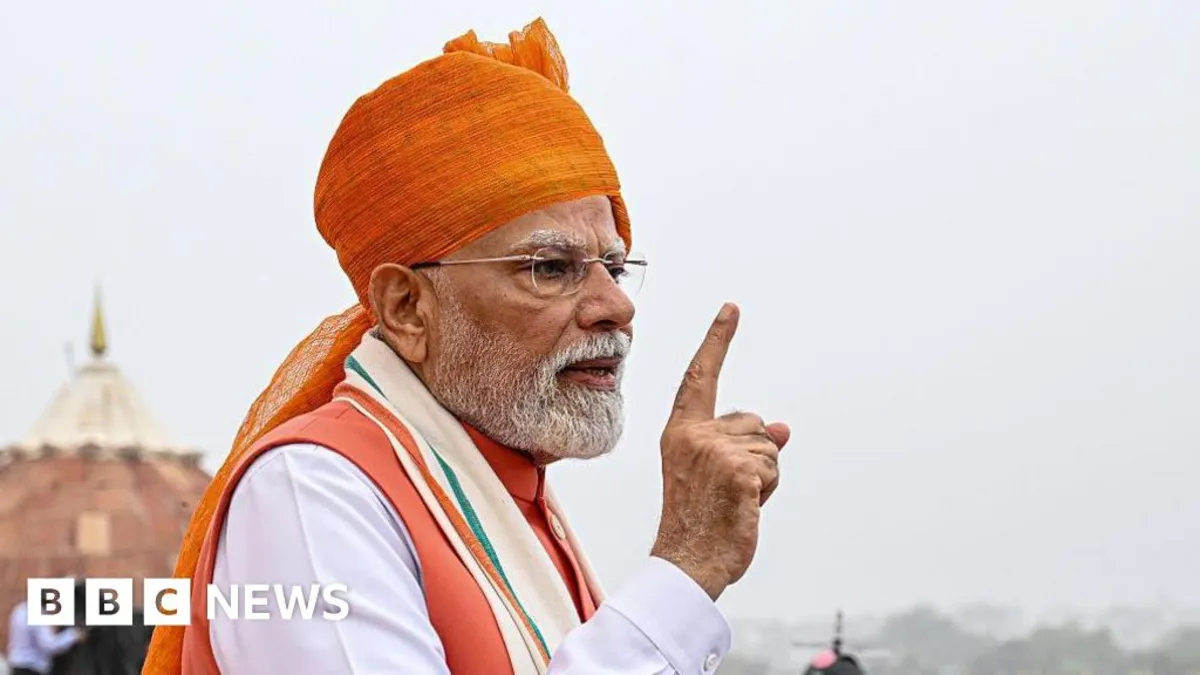
Earlier this month, Indian Prime Minister Narendra Modi made a significant announcement that has generated substantial interest among the public. He promised a Diwali gift in the form of a substantial tax bonanza aimed at the common man and the millions of small businesses that fuel Asia's third-largest economy. Dressed in a vibrant saffron turban and addressing an enthusiastic crowd from the historic ramparts of Delhi's Red Fort during the Independence Day celebrations, Modi emphasized the need for self-reliance. He urged small shop owners and businesses to display boards promoting Swadeshi or Made in India products outside their establishments. “We should become self-reliant—not out of desperation, but out of pride,” he declared.
Modi's rhetoric comes at a time of rising economic protectionism globally, particularly in response to US President Donald Trump’s impending 50% tariff rate on Indian goods, which is set to take effect on August 27. This new tariff threatens to disrupt the livelihoods of millions working in India’s export-driven industries, which supply a variety of products from clothing to diamonds and shrimp to American consumers. In light of these challenges, Modi's message has been unequivocal: Make in India and Spend in India.
While the call to action is clear, the path to achieving self-reliance has proven increasingly difficult. The share of manufacturing in India’s gross domestic product (GDP) has stagnated at around 15%, despite Modi's government implementing various subsidies and production incentives over the years. However, analysts suggest that initiating long-overdue tax reforms that put more money into the hands of consumers could help mitigate some of the economic impacts of these tariffs.
Earlier this year, Modi announced a $12 billion income tax giveaway, and he is now focusing on overhauling India's indirect tax system, particularly through the Goods and Services Tax (GST). Introduced eight years ago, the GST was designed to simplify the complex web of indirect taxes. However, experts argue that it has become overly complicated, with numerous thresholds and exemptions. They have consistently called for a revamp of the system, and Modi has responded with a proposal for a simplified two-tier GST structure.
According to financial analysts from Jeffries, a US brokerage house, the combination of the income tax cut scheduled for April 2025 and the anticipated GST reforms—estimated to be worth around $20 billion—could significantly stimulate consumption. Private consumption is a critical component of India's economy, accounting for nearly 60% of the country's GDP. While rural spending has remained robust due to a successful harvest, urban demand for goods and services has been declining, primarily due to wage stagnation and job losses in major sectors like IT following the pandemic.
Investment banking firm Morgan Stanley believes that Modi's fiscal stimulus and tax cuts will help ensure a recovery in consumption, driving GDP growth while alleviating inflationary pressures. This is particularly crucial in light of ongoing global geopolitical tensions and tariff-related challenges that could dampen external demand.
The sectors expected to benefit most from the tax reforms include consumer-oriented industries such as scooters, small cars, clothing, and construction materials like cement, especially as demand typically surges around the festive period of Diwali. While the exact details of the reforms remain under wraps, analysts estimate that the revenue loss from a lower GST rate could be compensated by increased collections from surplus levies and higher-than-expected dividends from India's central bank.
Swiss investment bank UBS has noted that the GST cuts may have a more significant multiplier effect compared to previous corporate and income tax reductions instituted by Modi, as they will directly influence consumer spending at the point of sale. This could potentially lead to an uptick in overall consumer expenditure, bolstering the economy during this pivotal time.
As the nation eagerly anticipates the implementation of these tax reforms, all eyes will be on how effectively they can stimulate growth, support small businesses, and enhance the financial wellbeing of the common man as India navigates through these challenging economic waters.